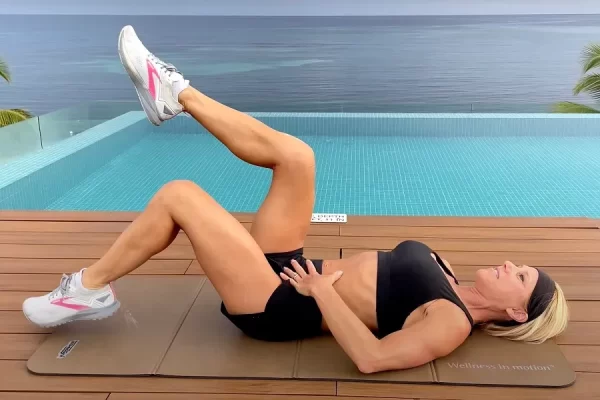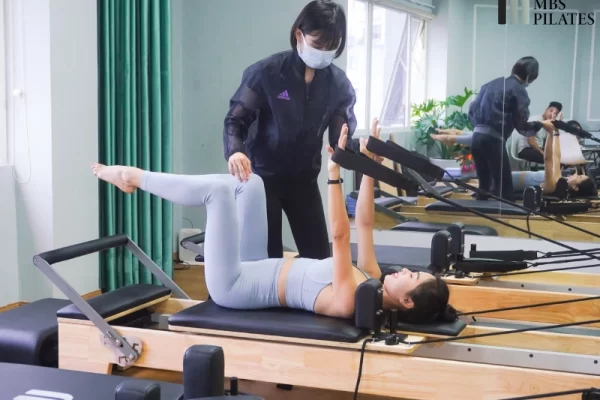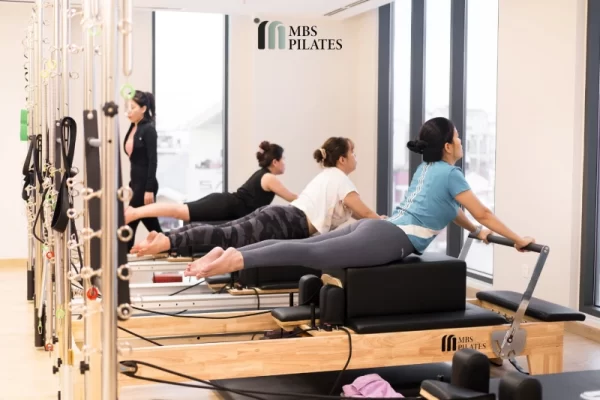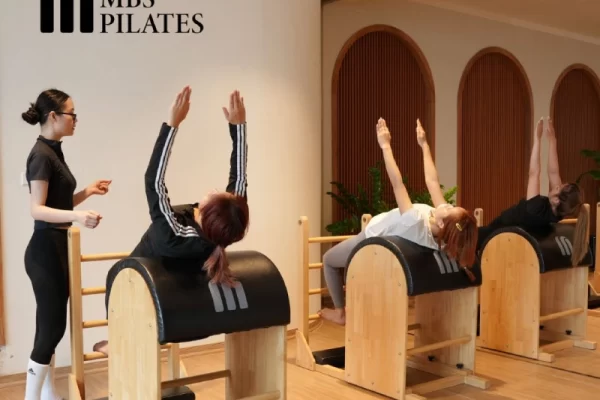Pilates Ball Guide: Benefits, Uses, and Essential Tips for Safe Practice
25/11/2025In today’s diverse fitness world, the Pilates ball has become an essential tool in many people’s Pilates routines. Known for enhancing flexibility, muscle strength, and balance, the Pilates ball is increasingly popular. Let’s explore what a Pilates ball is, its key benefits, and the important considerations when incorporating it into your Pilates training.
Understanding the Pilates Ball
Pilates is a popular exercise method, especially for women. Among the Pilates equipment, the exercise ball is indispensable.
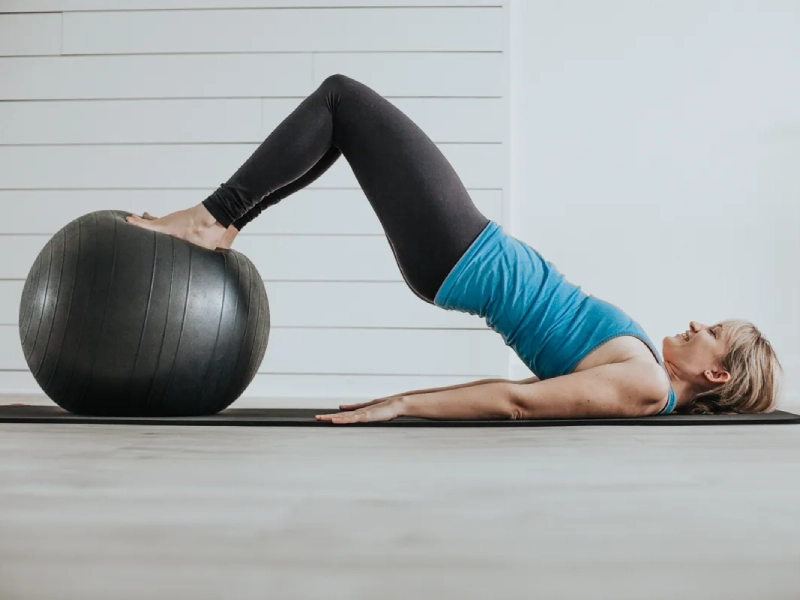
The exercise ball is an essential piece of equipment for Pilates.
The Pilates ball is made of rubber with high elasticity and durability. It supports exercises that require endurance and flexibility, helping users maintain balance in various positions. Training with a Pilates ball strengthens muscles and improves joint health. Standard ball diameters range from 55 cm to 75 cm. When using a Pilates ball, always follow your instructor’s guidance to ensure correct technique and avoid injury.
Benefits of Training Pilates with a Ball
1. Enhances Flexibility and Mobility
To perform Pilates effectively, maintaining balance is essential. A Pilates ball boosts flexibility and mobility, making advanced poses easier to execute. Practicing on the ball requires the body to stabilize continuously, strengthening muscles and supporting the joints.
2. Tones the Lower Abdominal Area
Fat around the lower belly often causes discomfort and self-consciousness. Reducing it requires consistent, long-term training. Pilates ball exercises target the waist, abdominal muscles, and hips, helping burn fat effectively and shaping a toned, slimmer waistline.
3. Improves Joint and Bone Health
Pilates ball workouts help strengthen the joints by encouraging controlled movements and balance. Maintaining stability on the ball activates muscles around the joints, helping prevent injuries and easing lower back pain.
4. Burns Fat and Supports Weight Loss
Pilates exercises using a ball increase calorie burn and fat loss. The instability of the ball boosts metabolism and energy expenditure, supporting healthy weight management and a leaner physique.
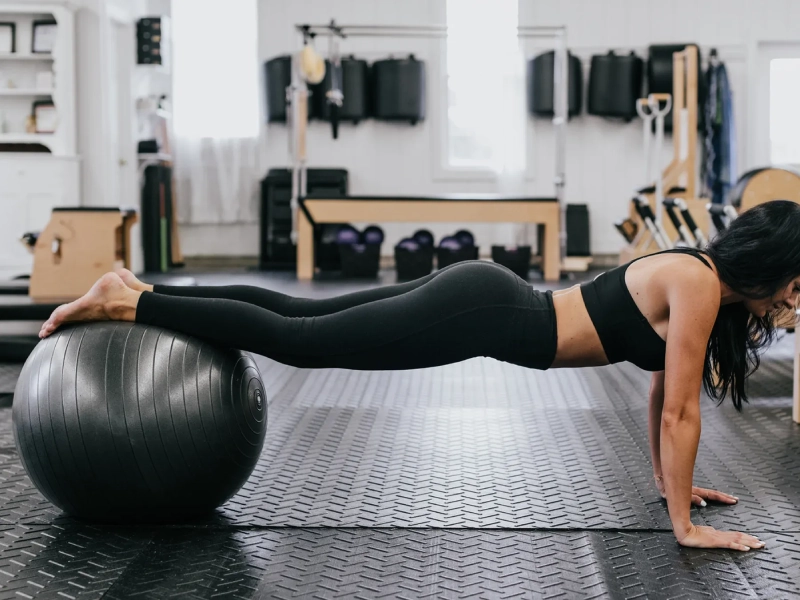
Pilates exercises with a ball help burn calories and excess fat effectively.
5. Improves Balance and Coordination
Training with a Pilates ball requires coordination among different muscle groups. Maintaining balance on the ball enhances body awareness, reaction time, and overall coordination.
6. Reduces Stress and Boosts Mental Well-Being
Pilates supports both physical and mental wellness. Practicing with a ball helps reduce stress, elevate mood, and improve focus. It also promotes relaxation and mental clarity.
Combine abdominal and back workouts with the ball and progress gradually for best results. Consult a Pilates instructor to choose the ball that suits your body.
How to Choose the Right Pilates Ball
The Pilates ball comes in different shapes and sizes—round, oval, smooth, or spiked. To select the right one, consider your height and training goals.
1. Choose Based on Height
Selecting the correct ball size is crucial:
- Height around 1.5 m: Choose a 45 cm ball
- Height from 1.55 m-1.7 m: Choose a 55 cm ball
- Height from 1.7 m-1.8 m: Choose a 75 cm ball
If you’re unsure of your exact height, follow these steps:
- Stand against a wall with bare feet
- Mark your knee height on the wall
- Measure from the top of the ball to the bottom
- When the ball’s top aligns with your knee, the size is correct
Note: Avoid choosing a ball more than 10 cm below knee height, as it may hinder proper training.
2. Choose Based on Intended Use
Your training goal also influences the ideal ball size:
- For joint support, lower back improvement, or leg-lengthening exercises: Choose a ball 5-10 cm larger than the standard size.
- Using the ball as a work chair: Select a ball about 10 cm higher than your desk height. Example: For desks 75–80 cm high, choose a ball with a slightly larger diameter for comfortable sitting.
Following these guidelines ensures you pick the most suitable Pilates ball, maximizing effectiveness and safety during workouts.
Versatile Applications of the Pilates Ball
The Pilates ball isn’t just a workout tool; it connects the body, mind, and movement. Whether you’re a beginner, undergoing rehabilitation, or an athlete, there are always suitable Pilates ball exercises.
Applications in Traditional Pilates Exercises
The Pilates ball enhances classic Pilates movements, adding challenge and engagement. Examples include:
- The Bridge: Placing your feet on the ball activates the hamstrings, glutes, and core.
- Roll Up: Holding the ball in your hands or between your legs increases abdominal and spinal control.
- Side Kick Series: Resting the leg on the ball improves hip mobility and requires strong balance.
These exercises deepen neuromuscular connection and support stable core strength.
Applications in Rehabilitation Training
The Pilates ball is widely used in physical therapy:
- Supports the spine: Lying on the ball reduces pressure on the vertebrae.
- Gentle mobility training: Swaying, stretching, or pelvic tilts help regulate joint and nerve function.
- Post-surgery or injury recovery: The ball’s instability activates small and deep muscles without requiring excessive force.
Applications in Strength and Flexibility Training
Integrating the Pilates ball into high-intensity workouts improves full-body mobility and strength:
- Plank with feet on ball: A more challenging variation of the traditional plank.
- Wall squat with ball: Placing the ball between your back and the wall reduces knee strain and supports deeper squats.
- Hamstring curl: Lying down with heels on the ball, lifting the hips, then pulling the ball inward.
Important Notes When Training with a Pilates Ball
The elasticity and firmness of the Pilates ball significantly affect training outcomes. A ball that is too hard or too soft reduces effectiveness and makes exercises harder. Use a ball with moderate firmness and keep in mind the following:
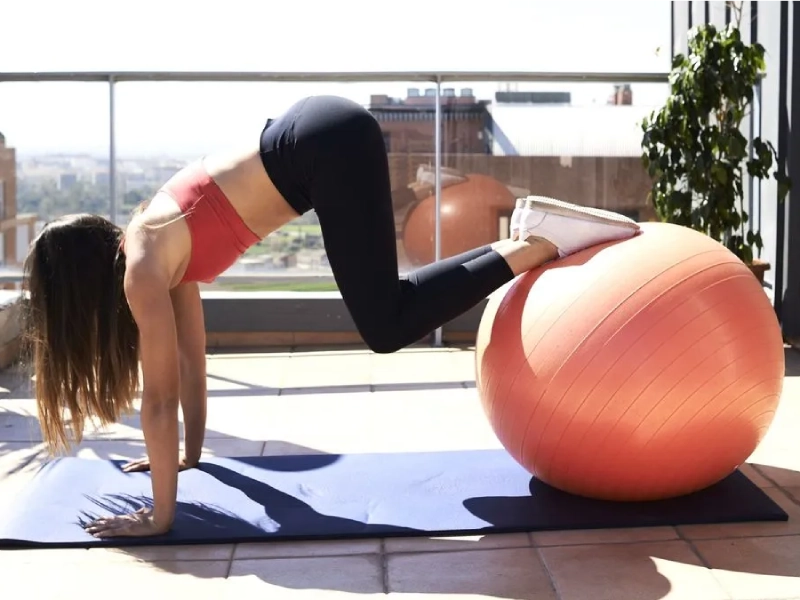
A few important points to note when practising Pilates with a ball.
1. Choose the Right Type of Ball
Pilates balls come in two main designs:
- Smooth surface ball: Comfortable and suitable for beginners. It supports exercises like push-ups and squats.
- Spiked ball: Made with thicker rubber and textured bumps to prevent slipping. Ideal for more advanced or precise movements.
2. Pay Attention to Ball Placement
Avoid placing the ball off-center to prevent imbalance and falls. Keep the ball stable throughout your workout.
3. Consult and Purchase Carefully
- Ask your instructor: If you’re unsure, seek advice to choose a ball that fits your body and goals.
- Buy from trusted stores: Choose reputable suppliers to avoid low-quality or counterfeit products.
By following these precautions, you can practice with a Pilates ball safely and effectively.
This guide has provided an in-depth look at the Pilates ball and the many benefits it offers for both health and physical performance. Using the Pilates ball correctly improves flexibility, strengthens the body, and enhances posture. Remember to follow key safety tips to achieve the best results. Start incorporating the Pilates ball into your routine today and experience the difference it brings to your training!

